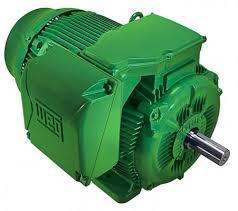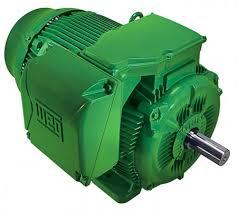DoE Energy Rule Will Lead to Bigger, Expensive Motors
March 20, 2015

In early March, the US Department of Energy put new energy efficiency rules into effect for small, general-purpose electric motors. The new rules apply to manufacturers of open-construction, single-phase, and polyphase motors built in a two-digit National Electrical Manufacturers Association (NEMA) frame that are rated from 1/4 to 3 horsepower.
According to the DoE, these revised regulations will save approximately 2.6 quads of energy and result in approximately $35 billion in energy savings from motors shipped between 2015 and 2044. In addition, the agency said the new standards will result in 133.6 million less metric tons of carbon dioxide emissions, equivalent to the annual greenhouse gas emissions of about 26.2 million automobiles.

The new rules do not apply to split-phase, shaded-pole, and permanent-split capacitor motors, which do not qualify as general-purpose motors. Small electric motors that require listing or certification by a nationally recognized safety testing laboratory have until March 9, 2017 to comply.
Proponents of the new regulations say they will produce more efficient, cooler-running motors and extend bearing life and reduce motor insulation degradation. Some of the new efficiencies will also come from the use of better steels and more active materials, such as copper, aluminum, and electrical steel, while others will stem from design improvements.
While there is little dispute about the energy efficiency benefits of the rules, some motor manufacturers have warned that the rules could result in considerable difficulties for their customers -- namely larger and more expensive motors than they are accustomed to.
MORE FROM DESIGN NEWS: The DoE Just Broke the World Record in Solar Cell Efficiency
Dale Basso, product manager for low-voltage motors at WEG Electric Corp., and vice chairman of the 1MG Motor and Generator Section of NEMA, told Design News that the regulations will require manufacturers to expend a lot of resources both in redesigning motors and working with customers to ensure they are ready for the change. While the company was expecting the regulations, it disagrees that the established new rules are the best approach."It is a rule we believe puts far more cost burden than reward on our customers," said Basso. "There are size issues: not all motors will get bigger, but some will, and it will create issues for customers that have to replace the motor, and the OEM that must redesign their equipment."
The size issues are due to the fact that meeting the new guidelines will require the use of more active materials and additional capacitors to meet energy efficiency rules. This, in turn, is likely to lengthen or widen the diameter of small motors.
"Sometimes this can be minimized by utilizing higher grade electrical materials at a higher cost, so either way, the increase will be higher than efficiency alone would dictate," Basso told us.
He said manufacturers of electric motors such as WEG worked in conjunction with NEMA to make recommendations to the DoE regarding new efficiency rules, but the agency discounted a lot of the industry input, and the resulting rule is "less than anyone would like."
In addition, many motor manufacturers are worried that the new rules will make their machinery customer base less competitive abroad. "US-built equipment will be less competitive in the global market, because the OEMs will need to purchase higher-cost motors than their offshore competitors," Basso added.
Tracey Schelmetic graduated from Fairfield University in Fairfield, Conn. and began her long career as a technology and science writer and editor at Appleton & Lange, the now-defunct medical publishing arm of Simon & Schuster. Later, as the editorial director of telecom trade journal Customer Interaction Solutions (today Customer magazine) she became a well-recognized voice in the contact center industry. Today, she is a freelance writer specializing in manufacturing and technology, telecommunications, and enterprise software.
About the Author(s)
You May Also Like


.jpg?width=300&auto=webp&quality=80&disable=upscale)


